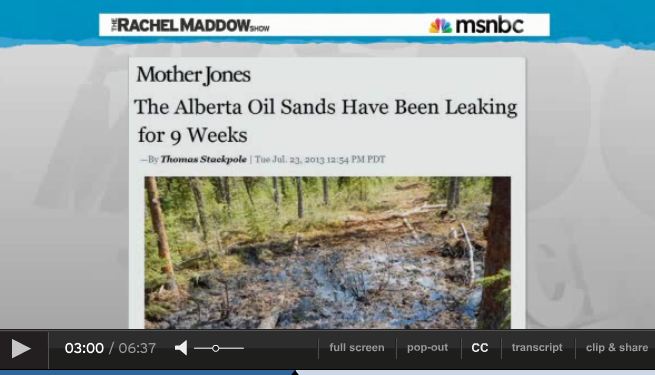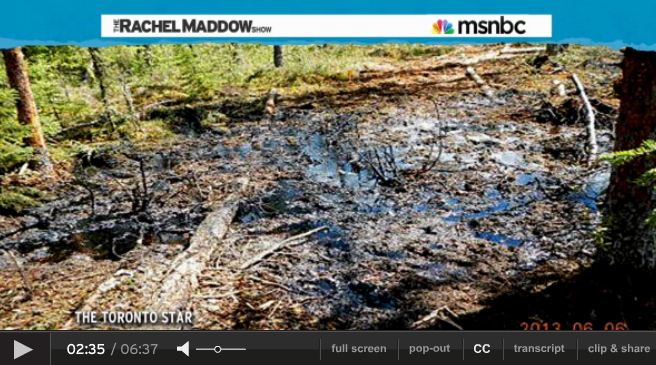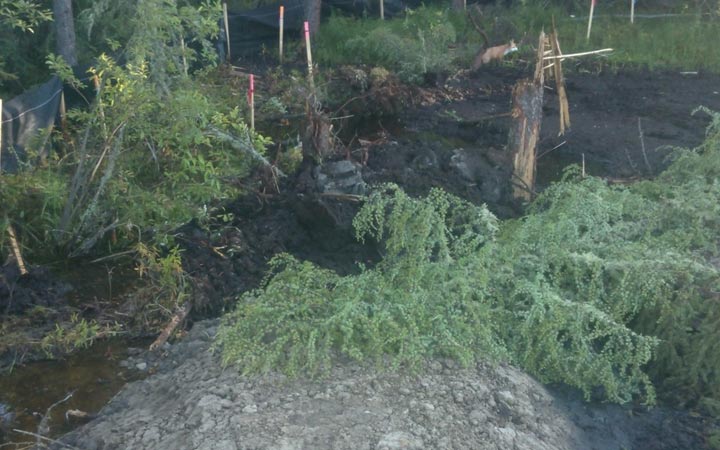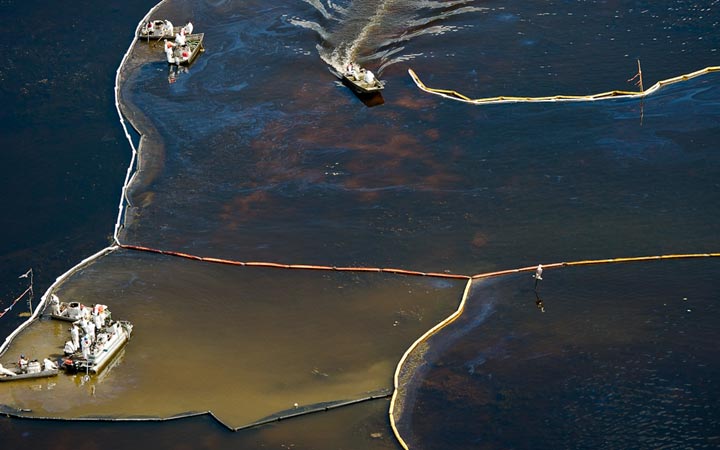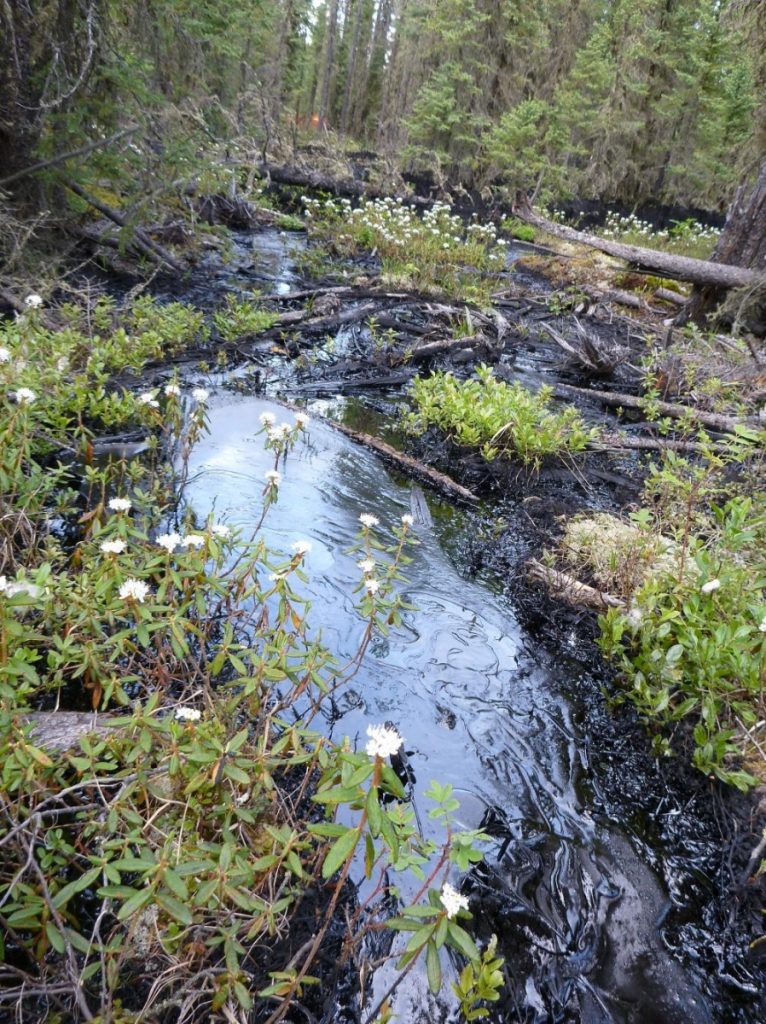![]() Jason Kenney needs to apologize to BigFoot Family and Netflix. Pronto!
Jason Kenney needs to apologize to BigFoot Family and Netflix. Pronto!![]()
More flimflam than usual in yesterday’s four-province news conference touting small nuclear reactors by David Climenhaga, April 15, 2021, Alberta Politics
By recycling some old news ![]() The 4 little nuke boy’s MOU is dated Dec 2019!
The 4 little nuke boy’s MOU is dated Dec 2019!![]() about their joint project to promote “small modular reactors” yesterday, Alberta, Saskatchewan, Ontario and New Brunswick have proved dubious ideas in Canada have a half-life worthy of a uranium isotope.
about their joint project to promote “small modular reactors” yesterday, Alberta, Saskatchewan, Ontario and New Brunswick have proved dubious ideas in Canada have a half-life worthy of a uranium isotope.
Well, maybe not quite that persistent. Some of those suckers can hang around for four and a half billion years. But the political equivalent, anyway.
The effort to sell us on the idea of Small Modular Reactors, the nuclear industry’s slightly sanitized term for small nuclear reactors, is an example of how bad ideas keep reappearing in this country like the proverbial bad penny – although a very large number of pennies are inevitably involved.
There’s always a certain amount of flimflammery in government news announcements, but yesterday’s contained more than usual. After a feasibility study, four Conservative provincial governments have now signed a memorandum of understanding to collaborate on the advancement of an unproven and expensive technology for which there is no market.
But since the Conservative premiers of Saskatchewan, Ontario and New Brunswick had already signed the speculative deal, the only thing actually approaching news yesterday was that Alberta signed up too. All four were on hand via teleconference link, with Ontario’s Doug Ford acting as master of ceremonies.
Unmentioned in the Alberta government’s verbose release was that the Kenney-come-lately province’s decision to join the deal last summer was likely the United Conservative Party Government’s urgent need to change the channel on a huge political embarrassment – Education Minister Adriana LaGrange’s incoherent gong show of a curriculum-review news conference on Aug. 6.
That in turn appeared to be an attempt by Premier Jason Kenney and his political strategists to distract Albertans from the fatal potential of the province’s half-baked plan to reopen Alberta’s schools in September without adequate measures in place to deal with the COVID-19 pandemic.
This can’t be said to have been a very successful sleight of hand. Months later, both issues are still plaguing the Alberta Government. But as they say, in for a penny, in for a billion pounds!
Mr. Kenney’s enthusiastic description of this “exciting new technology that could be used in the future to significantly cut greenhouse gas emissions” was a chance to change the channel yet again. (Emphasis added.) This time, the Kenney Government’s problems are the third wave of the pandemic that’s now hammering Alberta and the embarrassing rebellion by 18 backbench MLAs from the UCP’s own caucus who want to undermine the province’s effort to control the coronavirus. The curriculum, which has now been released to disastrous reviews, is not far from many Albertans’ minds either.
As for the yarn about little modular reactors producing clean energy – even “generating power for Canadian oilsands producers,” as Mr. Kenney hopefully put it – that’s almost certain to turn out to be a pipe dream.
As University of British Columbia theoretical physicist M.V. Ramana wrote last month in a paper entitled Small Modular and Advanced Nuclear Reactors: A Reality Check, “expectations that small modular or advanced nuclear reactors will rescue nuclear power are unlikely to be met.”
“Nuclear advocates seem to be clutching at straws by emphasizing these options,” he said.
Dr. Ramana argued that among the challenges facing the idea – which is not really a technology, as Premier Kenney claims, so much as a large number of competing concepts for smaller reactors that have never been built – are the facts they’re less economical to operate than large nuclear power plants, they aren’t likely to be able to compete even with renewable energy like wind and solar, they’re not necessarily safer than large reactors, some designs might even make safety challenges worse, and there’s no demand for the things.
In addition to the points raised by Dr. Ramana, small nuclear reactors are never going to make economic sense as long as natural gas is cheap and plentiful.
Of the dozens of SMR designs being touted throughout the world, only one doesn’t require enriched uranium – and Canada produces no enriched uranium. This means Energy Minister Sonya Savage’s claim last summer that “Alberta’s rich uranium deposits … could make us an attractive destination to develop and deploy SMRs” was flimflam too. Global uranium markets are saturated.
Moreover, attempts to build SMRs like Russia’s reactor on a barge, nicknamed “Floating Chernobyl” by critics, have experienced huge cost overruns, just like those common to large nuclear projects. “One study of construction cost overruns showed that 175 out of the 180 nuclear projects examined had final costs that exceeded the initial budget, on average by 117 per cent,” Dr. Ramana noted in his paper.
The problem of nuclear waste disposal remains unsolved as well.
Finally, even in the unlikely event SMRs become a marketable and affordable technology, most of the Canadian jobs created are likely to be in Ontario, where the manufacturing capacity and nuclear engineers are found.
Nice distraction, but this dog won’t hunt.
Four provinces to sign memorandum of understanding to explore small nuclear reactors by The Canadian Press, April 14, 2021, The Globe and Mail
Alberta is to join three other provinces to explore the feasibility of small modular nuclear reactors as a clean energy option. ![]() Nothing clean about nuclear, big or small.
Nothing clean about nuclear, big or small.![]()
Jason Kenney, along with premiers of Ontario, Saskatchewan and New Brunswick, are to sign a memorandum of understanding today related to exploring small-scale nuclear technology.
The Alberta government said in August that it would enter into the agreement to help diversify its energy sector.
All four provinces oppose the federally mandated carbon tax.
Alberta says small modular reactors could supply non-emitting, low-cost energy for remote areas in the province as well as industries that need steam such as the oilsands.
It says the units are smaller than traditional nuclear reactors with lower upfront capital costs and enhanced safety features. ![]() Is it wise to believe any word out of an Alberta politician mouth?
Is it wise to believe any word out of an Alberta politician mouth?![]()
A few of the comments:
TrueNorthCanadian:
Using nuclear reactors to help dig up more oil in the north. What could possibly go wrong?
staringfish:
These four premiers have no credibility. Conservative governments today no longer build things. They are infected with American style libertarianism which directs them to pursue policies of lowering taxes and telling people to figure it out for themselves.
Technology like this requires a concern for the future, forward thinking, and planning, and science, and public investment. Does that sound like these guys? …
Alta., Ont., Sask. and N.B. sign agreement to explore small nuclear reactors, Five things to know about Canada’s proposed small modular nuclear reactors by The Canadian Press with files from CBC News, Apr 14, 2021

Alberta’s Jason Kenney became the fourth premier to sign an agreement supporting the development of small modular nuclear reactors (SMRs) in Canada on Wednesday.
Kenney signed a memorandum of understanding with the premiers of Ontario, New Brunswick and Saskatchewan.
The provinces also released a feasibility report prepared by Ontario Power Generation, Bruce Power, NB Power and SaskPower which gives a potential timeline for development and deployment of SMRs and assesses their competitiveness with other non-emitting energy sources.
In 2019, Ford, Moe and Higgs committed to collaborate on developing small modular reactor technology. The Alberta government announced in August that it would enter into the existing agreement.
Alberta hopes to diversify energy sector
Kenney said signing on to the memorandum of understanding would help diversify Alberta’s energy sector and keep the province at the forefront of any future advancements in the technology.
Kenney said the province hopes the nuclear technology will allow the government to provide power to remote communities, diversify the economy, create jobs and reduce greenhouse gas emissions.
Alberta says small modular reactors could supply non-emitting, low-cost energy for remote areas in the province as well as industries that need steam such as the oilsands.
“Alberta has always been committed to clean, affordable energy,” Kenney said in a statement Wednesday. “Small modular reactors are an exciting new technology that could be used in the future to significantly cut greenhouse gas emissions, for example by generating power for Canadian oilsands producers.
“Nuclear is the cleanest form of electricity production, and with SMRs is now more affordable and scalable for industrial use,” he said in the statement.
“We are excited to be part of this group that will help develop Canadian SMR technology.”
Alberta premier touts prospect of small nuclear reactors
The units are smaller than traditional nuclear reactors with lower upfront capital costs.
The technology is also small enough that modules can be transported on a truck, ship or train, and has been touted by the federal government as safer than traditional nuclear reactors. ![]() That doesn’t say much. Traditional nuclear reactors are mighty unsafe.
That doesn’t say much. Traditional nuclear reactors are mighty unsafe.![]()
Here’s five things you should know about SMRs:
What are SMRs?
SMRs are nuclear reactors that produce less than 300 megawatts of electricity. Because they are smaller than traditional nuclear power plants, which generally produce 800 megawatts (MW) and up, they are expected to be cheaper to build, scalable to meet specific industrial and remote community needs and, according to the report, will have the “potential” to be competitive with other low-carbon forms of energy.
When are they expected to be in use and where?
According to the feasibility study, Canada’s first grid-scale SMR project of about 300 MW is expected to be in place at the Darlington nuclear site in Ontario by 2028, followed by up to four similar units in Saskatchewan with the first in service in 2032. The technology and developer are to be selected by the end of this year.
An advanced SMR design is also to be developed in New Brunswick resulting in demonstration units at the Point Lepreau, N.B., nuclear site by 2030. Meanwhile, a new class of “micro SMR” is being designed to replace diesel use in remote communities and mines — a 5-MW gas-cooled reactor project is proposed at the Chalk River nuclear site in Ontario and is expected to be in service by 2026.
What is the federal role in developing SMRs?
The feasibility study says that “cost and risk-sharing with the federal government” is an important part of developing SMRs, noting they support Canada’s goals of phasing out coal by 2030 and becoming a net-zero carbon emitter by 2050. Federal Natural Resources Minister Seamus O’Regan has said nuclear power is essential to meeting Canada’s climate-change goals. ![]() Galling cop out by the feds and these 4 little nuke premiers.
Galling cop out by the feds and these 4 little nuke premiers.![]()
Are SMRs considered to be safe?
Proponents argue that new applications, simplified designs and advanced technology give SMRs an enhanced level of safety, building on Canada’s reputation as a safe and well-regulated leader in nuclear energy.
What do opponents of SMRs say?
More than 100 environmental, anti-nuclear, community and other Canadian groups signed a statement in November declaring SMRs a “dirty, dangerous distraction” from tackling climate change. They argued the fight against global warming can’t wait for the technology to be proven and deployed and warn SMRs will cost more than other low-carbon energy alternatives, won’t create as many jobs and will result in new streams of dangerous nuclear waste.
A few of the comments:
Charlene Pierce:
The nuclear power industry has a long history of making money…until it comes time to refurbish, decomission, and deal with long term waste. That is where we taxpayers come in. And it won’t be cheap. The total cost of nuclear energy is NEVER included in the rosy per kilowatt estimates. Worldwide there are no good long term solutions for nuclear waste storage. This waste must be stored for generations. What company lasts for generations, let alone thousands of years? Of course it will always be the taxpayers that maintain the waste and decomission nuclear facilities. Is that cost included in our Premiers rosy estimates? Of course not. If Canada accepted nuclear waste from other countries, we would be fools. We still struggle with our own. Of course, taxpayers will always be stuck with the dangerous radioactive poison and the bill. The Uranium mining industry has a shameful history in Northern Saskatchewan, leaving behind tailings still polluting radiation today, an expensive heart breaking problem…still unsolved. Did they pay for clean up? Where are they? And Moe wants more? Our four Conservative Premiers just got sold a pile of baloney, the question is, are we going fall for this ill thought out scheme?
Bernard Kobelsky:
When you’ve cleaned up all the nuclear waste already created you can “talk” about it until then NO WAY !!!
Paul North:
Still generates radioactive waste that will last thousands of years – the laws of physics haven’t changed. There is no viable “permanent storage” – all current storage is “temporary”.
You can’t make a container that will last more than a few centuries – that means our descendants will have to pay to deal with it.
No CO2 but lots of radionucleotides.
It’s not clean, it’s not safe, and it’s not cheap.
David MacKenzie:
Why use SMRs to melt tar dirt and make a mess when you could use the power directly? ![]() Because these small nuclear reactors are not for us, the citizenry, they are to be an enormous gift to industry, notably big oil and gas (including to frac with nuclear waste) – from us for the rich, largely foreign, to make more billions while risking our safety, environment, health and communities.
Because these small nuclear reactors are not for us, the citizenry, they are to be an enormous gift to industry, notably big oil and gas (including to frac with nuclear waste) – from us for the rich, largely foreign, to make more billions while risking our safety, environment, health and communities.![]()
Rob Hill:
The most bizarre thing is Kenney touting nuclear as a clean source of energy to extract bitumen from the oil sands. You couldn’t make that up.
Dave Mack:
To be honest, if nuclear power worked exactly as advertised, I would support it. But don’t try to bring me around to supporting it when it’s going to be built by the lowest bidder and Jason Kenney doesn’t know radio activity doesn’t mean changing stations on the radio.
Markko Caldo:
Reply to @Dave Mack: There used to be only one bidder AECL. Harper got paid megabuck to fix that. He’s collecting now. ![]() And, worse, Steve Harper leads Kenney by the nose (and penis). I expect Harper will make a personal bundle making Canadians pay for small nukes in the tarsands for multinationals to profit from (and walk from clean up, radioactive clean up).
And, worse, Steve Harper leads Kenney by the nose (and penis). I expect Harper will make a personal bundle making Canadians pay for small nukes in the tarsands for multinationals to profit from (and walk from clean up, radioactive clean up).![]()
ian ianjay:
Folks, if Ford handles nuclear energy the way he has handled vaccine rollout, we should be very concerned. You can’t just make things up as you go along which is the only way he operates.
Michael Jones:
All energy is not bad Holley but this idea makes many people uneasy..
Scott Stone:
“… Alberta has always been committed to clean, affordable energy, …”
Wow, in total baldface to boot.
Morgan Arthurson:
… The oil and gas industry monopolized the market into having to use their products and they knew about climate change in the 1960s and funded climate change denial campaigns to stop humanity from trying to ameliorate the damages from oil and gas use. Now they have decided to get into the deadly waste business, I guess. ![]() Companies want to experiment frac’ing with nuclear waste. What better way to do that, than make us pay for reactors to nuke tarshit and haul deadly waste around to frac sites in SK, AB, and BC, by incredibly dangerous frac truck drivers?
Companies want to experiment frac’ing with nuclear waste. What better way to do that, than make us pay for reactors to nuke tarshit and haul deadly waste around to frac sites in SK, AB, and BC, by incredibly dangerous frac truck drivers?![]()
Roosevelt Smith:
“Alberta has always been committed to clean, affordable energy,” Kenney said in a statement Wednesday. “Small modular reactors are an exciting new technology that could be used in the future to significantly cut greenhouse gas emissions, for example by generating power for Canadian oilsands producers.
anyone see the blatant irony and b s in this paragraph?
Kevin Wilkins:
“Alberta has always been committed to clean, affordable energy,” Kenney said
Hahahahahahahahahaha…… Seriously? Did you really just say that out loud?
Orest Zarowski:
This crew is getting together to build nukes? Scary thought. And what are the plans for dealing with the waste? Alberta’s handling of the Orphan Wells does *NOT* inspire confidence at all.
Jack Hill:
I suppose Kenney will just throw the spent fuel rods into a farmers field until the federal government pays to [clean] it up, just like the orphan well disaster.

Refer also to:
“Insane” Greed: Fox Creek Shakes as Frackers Drill for Condensate to Dilute Bitumen


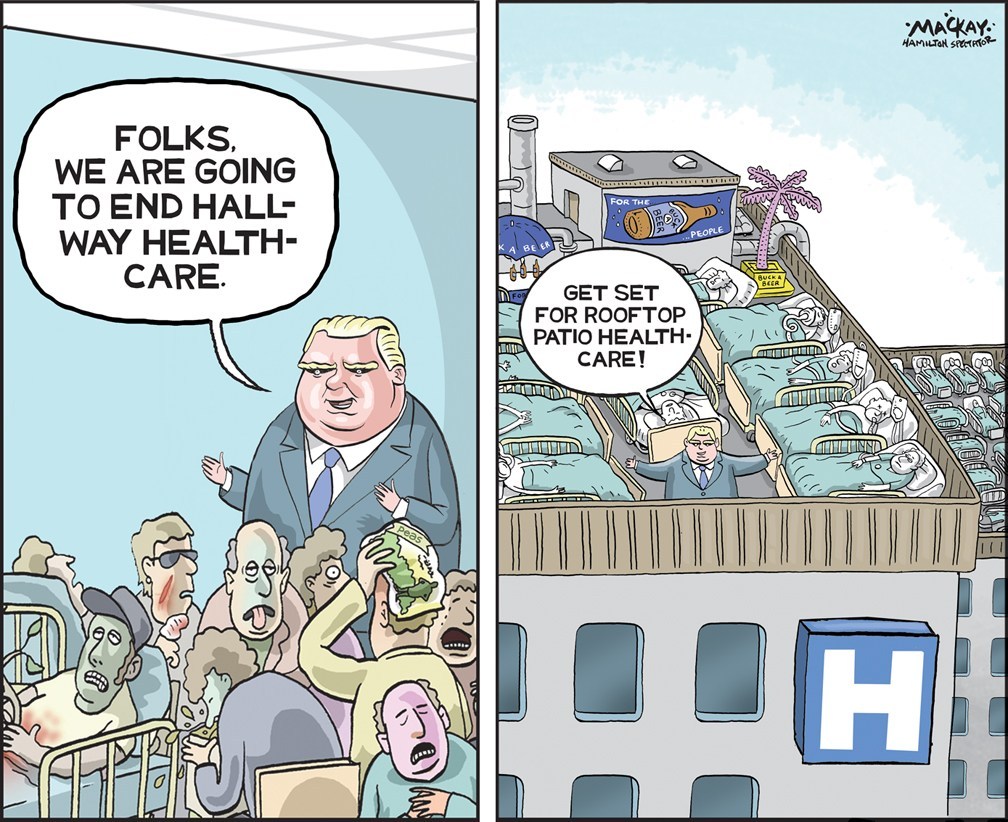

If industry’s abandoned bitumen sites kill wildlife, what’s it doing to groundwater and humans?
